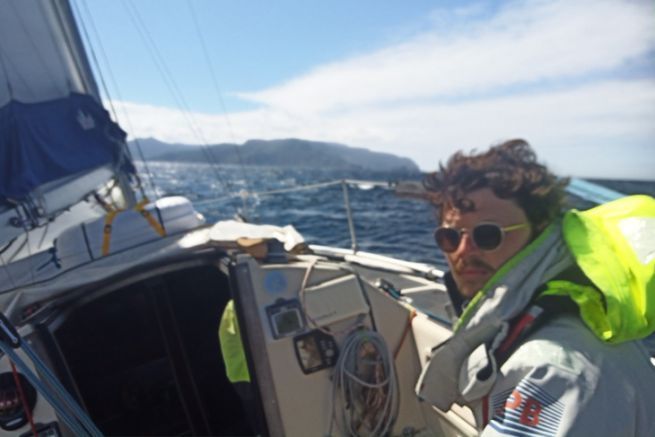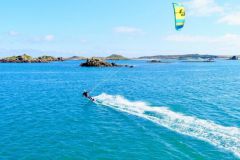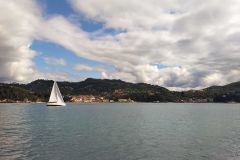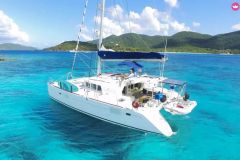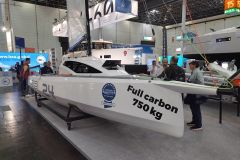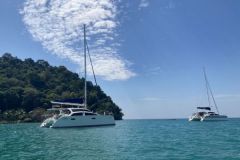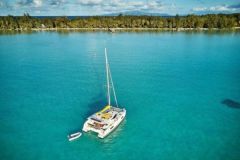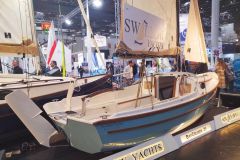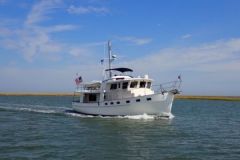Three little blues in the big bath. This is the credo of this crossing of the Bay of Biscay in September 2021 on board Nordkyn, our Etap 23. For Charlotte and me, this navigation marked the beginning of a journey of several months on this small boat across the Atlantic Ocean, but it was above all our very first outing in the open sea. It was a baptism, even if we had spent the last few years training our weapons by sailing between Granville, the Channel Islands and Brittany. For this piece of size supposed to lead us from Finistère to the coasts of Galicia, we embarked Téo, sailing instructor and rigging professional in a sailmaker. A first class recruit, although this third fellow, rather inclined to light sailing, is not much more initiated than us to the mysteries of the great ocean crossings.
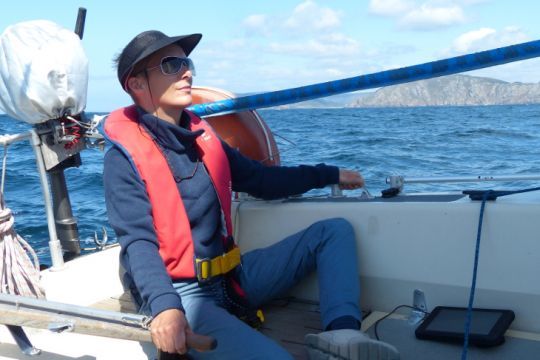
Weather: a small arms strategy
Early Sunday morning, September 5th, we left Audierne in a real pea soup. As we set course for Spain, we felt like we were leaving for a bit of an adventure. As for the weather, the high pressure over the British Isles should hold out, offering us two more days of downwind sailing. Then, we should encounter some calm as we approach the Iberian Peninsula before the wind, while remaining fairly light, shifts to the southwest and forces us to sail upwind. These conditions correspond to the strategy we have set ourselves: to play it safe by avoiding anything that could be similar to heavy weather. But the uncertain forecasts for the second part of the crossing will hold some surprises for us.
As we expect to sail a little under motor, we take on board 80 liters of fuel, which in absolute terms would allow us to cover a distance of 200 miles: two thirds of the crossing. Sixty liters of water, three bags of food supplies is not an easy task on board our small 7 meter sailboat where storage space is very limited. Finally, knowing that any cooking could be complicated in rough seas, we prepared several boxes of already cooked food. These, quickly spoiled by the heat, will finally feed the fish.
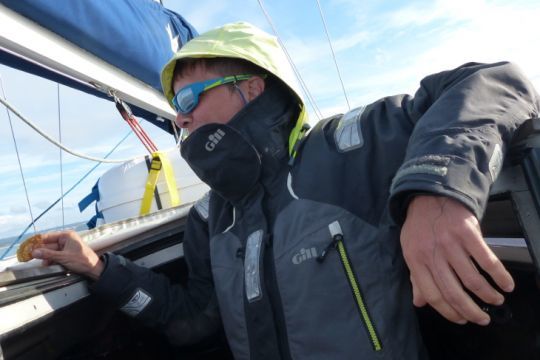
A military firing exercise on the road
The coast is no longer in sight when the fog rises and with it, a small breeze that allows us to send the spinnaker. For hours, we progressed surrounded by a horde of dolphins. Then the day goes down and we attack our first night of watches, taking turns every three hours to watch over the boat while keeping an eye on the numerous ships cruising in the vicinity. Fishermen, cargo ships, tankers, and even an Ultim trimaran that passed us at full speed to disappear a few moments later in the distance. With our speed not exceeding five knots, we simply have the impression of being at a standstill.
The next day, we received a VHF call that left us perplexed for several minutes. A ship of the French Navy announced a shooting exercise in a zone located right on our route. A moment later, we hear the cannonade in the distance. Obviously, we are too far away to bother the gunners!
As expected, the conditions change when we reach the halfway point between the Breton coast and Galicia. One of our routers, with whom we are exchanging text messages via the Inreach, explains that a small ridge of high pressure is positioned over the North of Spain. A glance in our weather bible tells us that this situation frequently generates thunderstorms in the area. And indeed, a few hours later, lightning illuminated the horizon. We decided to modify our route, turning westward in order to avoid these stormy squalls and to position ourselves for the southwestern shift. It arrived the next day, making the last part of the trip quite uncomfortable. Upwind in 25 knot gusts, the boat was banging and cracking hard and preparing a sandwich required a lot of determination.
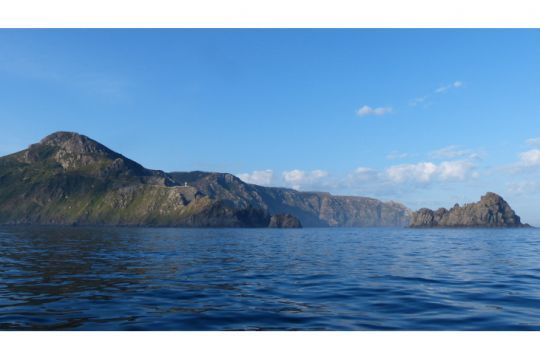
A first crossing full of lessons
Finally, on Wednesday morning, we are in sight of the cliffs of Cape Ortegal. At a good distance from the coast, the powerful smell of the eucalyptus forests assails our nostrils. We have just spent 80 hours on the water, tossed around in our small boat and the pressure is off as Nordkyn enters the small port of Cariño. Around a table covered with tapas and cervezas frescas, we recall the memorable moments that punctuated this small expedition: the whales' breath, the exhausted sparrow that lands in the cabin while we are in the middle of the sea
This first stage allowed us to learn a lot of lessons. On a boat that is not designed for such sailing, it seems vital to keep a close eye on every point of wear and tear. Moreover, we did not expect to accumulate so much fatigue, the lack of comfort making the experience all the more trying. Finally, if this modest victory has made us dream about the abilities of our little sailboat, the troubles that await us will soon put our feet back on the ground - at least for some time.
